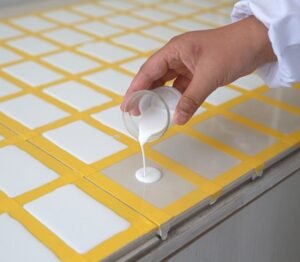HPMC and HEC, both of them are a kind of cellulose ether. but what is the difference between them? HPMC VS HEC. In recent years, the output and consumption of HPMC have been increasing rapidly. HPMC is an ironic cellulose ether. it begins refined cotton after alkalization treatment. Propylene oxide and methyl chloride is the etherifying agent in the HPMC manufacturing process. After a series of reactions, get HPMC. But HEC also begins refined cotton after alkalization treatment. With acetone, HEC uses ethylene oxide as the etherifying agent. So HEC has more hydrophilic than HPMC. It is prone to absorb moisture. In this essay, we will delve into the six key differences between HPMC and HEC, shedding light on their unique attributes and application areas.
Chemical Structure and Origin
HPMC and HEC are both derived from cellulose, a natural polymer found in plant cell walls. The key difference lies in their chemical modification. HPMC is modified with both methyl and hydroxypropyl groups, while HEC is modified with hydroxyethyl groups. This modification impacts their solubility, viscosity, and interactions with other substances.
Solubility and Compatibility
One significant difference between HPMC and HEC is their solubility in water. HEC exhibits better solubility in cold water compared to HPMC, making it suitable for applications where rapid dissolution is required. HPMC, on the other hand, has slower solubility and may require heat to fully disperse.
Viscosity Profile
Viscosity is a critical property when selecting a thickening agent. HEC generally provides higher viscosity at lower concentrations compared to HPMC. This makes HEC an excellent choice for applications that require thickening with minimal polymer content, contributing to cost-effectiveness.
Temperature Sensitivity
HPMC and HEC respond differently to temperature changes. HEC tends to thicken and gel at lower temperatures, making it suitable for cold-process formulations. HPMC, while also exhibiting temperature-sensitive behavior, requires higher temperatures for gelling and thickening. This temperature response impacts their application in products that undergo temperature fluctuations.
pH Sensitivity
Both HPMC and HEC demonstrate pH sensitivity, with their viscosity and performance influenced by the pH of the formulation. HEC is generally more stable across a wider pH range compared to HPMC. This characteristic makes HEC versatile for formulations that require pH adjustments or compatibility with different pH levels.
Application Areas
The distinct attributes of HPMC and HEC make them better suited for specific applications. HPMC slower solubility and lower viscosity make it suitable for applications that require controlled release, sustained viscosity, and longer-lasting effects. It is commonly used in pharmaceuticals, construction materials, and coatings. HEC rapid solubility, higher viscosity, and temperature sensitivity make it ideal for products such as personal care items like shampoos, conditioners, and body washes. Its ability to thicken at lower temperatures also makes it suitable for cold-process formulations in the food industry.



